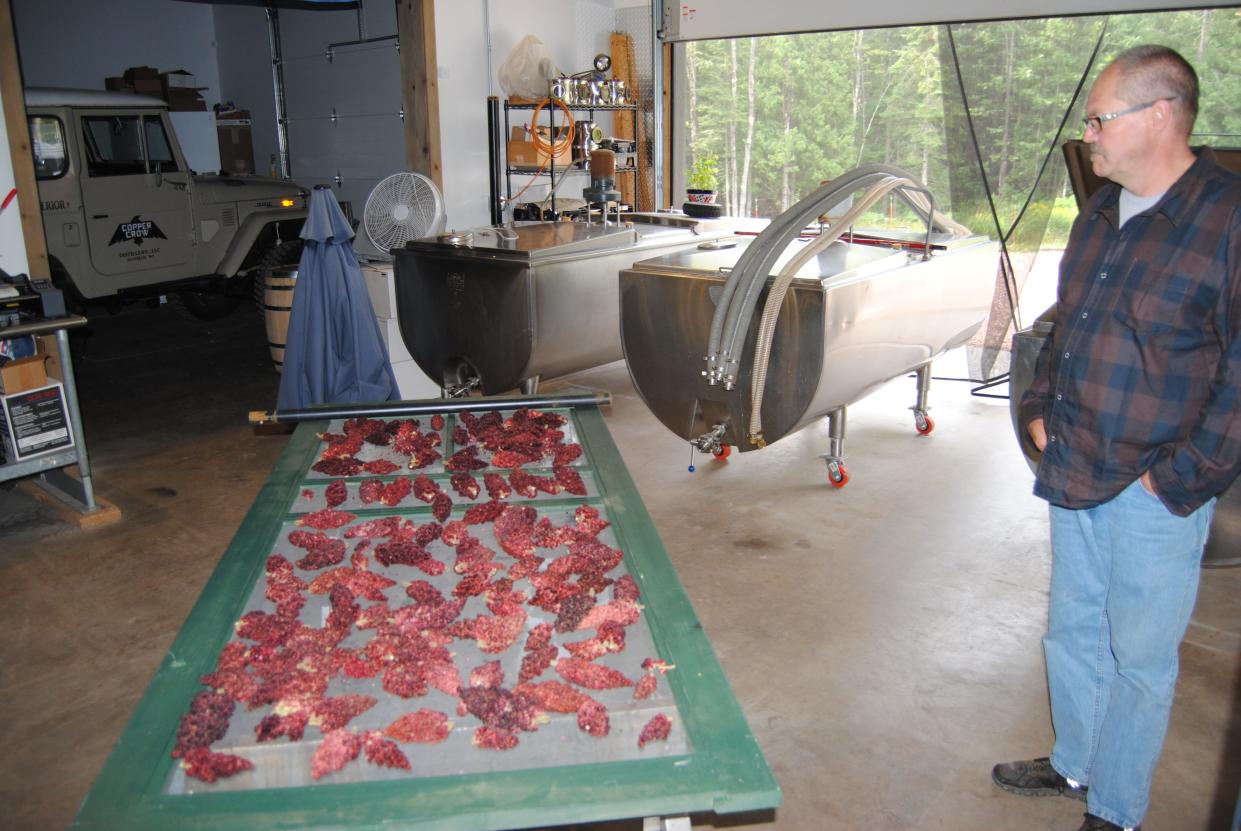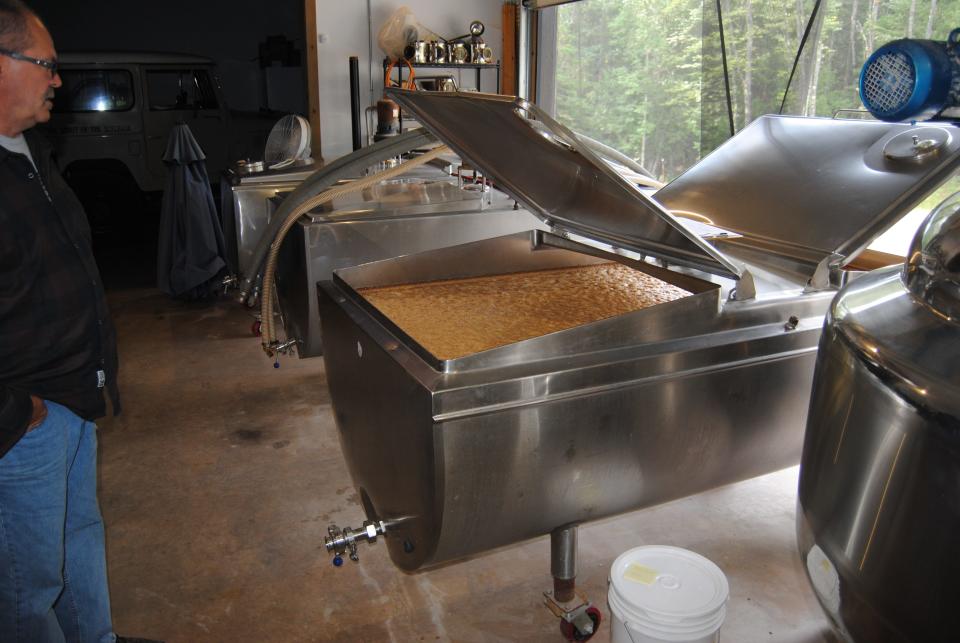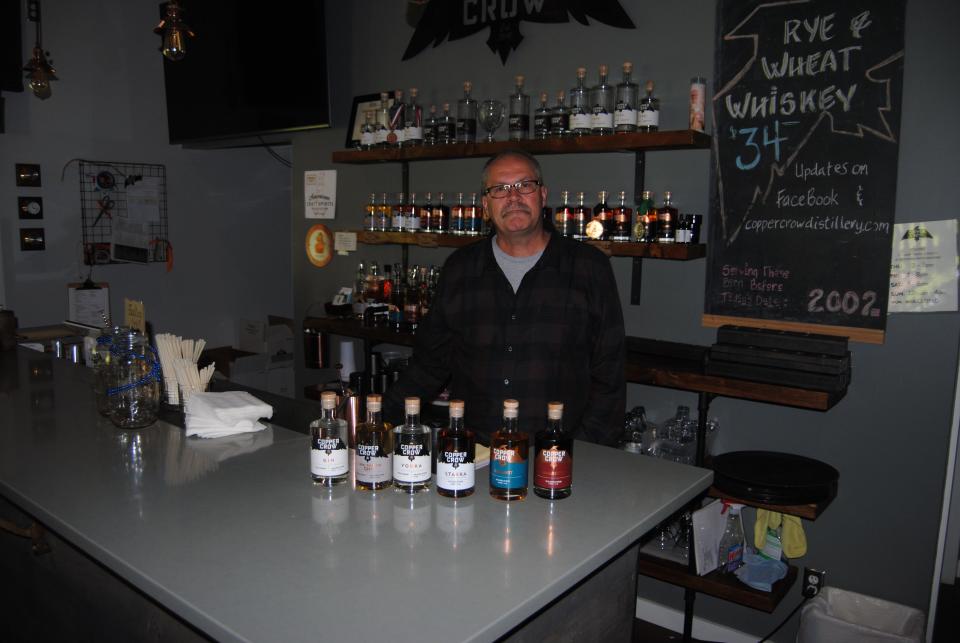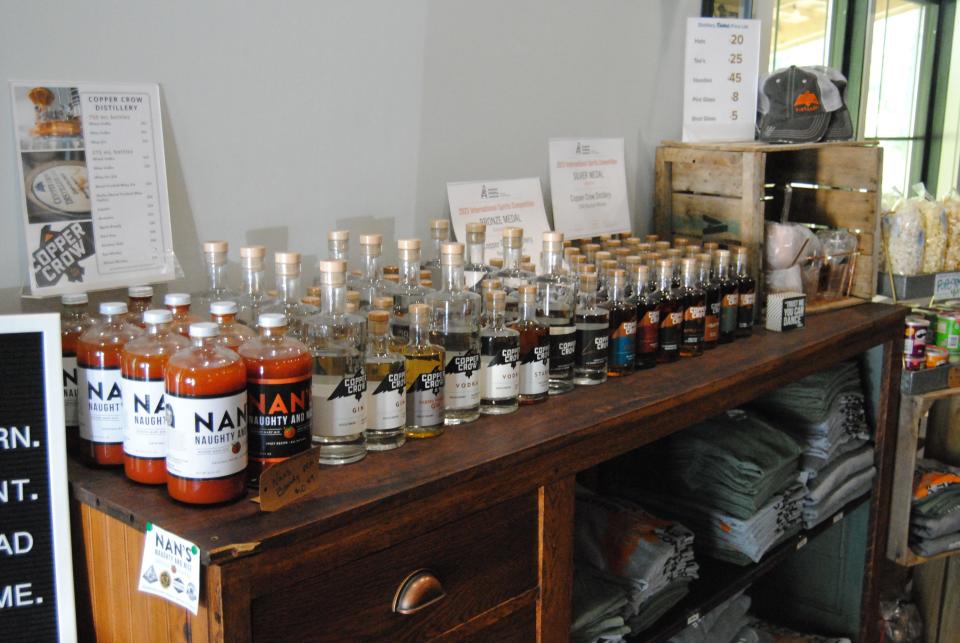Ojibwe man forages in Wisconsin's Northwoods to make fine spirits

RED CLIFF – Curtis Basina is having a lot of fun experimenting with different alcohol distilling techniques, using what he forages from the Wisconsin Northwoods around the Red Cliff Ojibwe Reservation.
This summer, he had his finds of red, edible sumac on drying racks at his Copper Crow Distillery in Red Cliff.
Basina, a retired Wisconsin state police officer, was planning to use the tart, sweet, berry-like plant to make a vodka.
Another recent forest find was wild mushrooms. The earthy and slightly bitter chaga made for some interesting spirits.
Basina is probably most known for becoming the first Native American distiller in the U.S. in 2017, just before a 200-year federal ban on Native Americans distilling alcohol on reservations was lifted.
And his most interesting products are probably spirits made from Wisconsin cheese, actually whey, which is a biproduct of the cheese-making process.
Basina is one of a handful of distillers in the nation who makes spirits from whey. That’s because it involves a significant amount of science, time and work.
“It’s kind of complicated,” Basina said.

The whey arrives with a very high lactose complex sugar content and then Basina adds enzymes to separate the sugar into glucose and galactose.
It’s the galactose that Basina wants to ferment with yeast, but galactose doesn’t like to ferment, so the yeast immediately goes after the glucose.
The yeast will eventually start to ferment the galactose, but Basina has to stop the fermenting process at the right time to avoid unwanted bacteria from forming.
“We’re not able to ferment all available galactose,” he said.
The end product is not a typical vodka.
“People like it,” Basina said. “It has a different mouth-feel (than traditional vodka). It’s creamier and finishes slightly sweet.”

He knew he wanted to set his distillery apart when he and his wife, Linda, were getting into the business.
Being from the Dairy State, it made sense to venture into spirits related to Wisconsin cheese.
Basina formed a partnership with nearby Burnett Dairy in Grantsburg to remove some of the whey from their hands after making cheese.
“They were excited because most whey is disposed of as a waste product, some of it is sprayed onto fields, but if it’s overly spread, it has the potential to get into water streams and whey can consume oxygen, possibly leading to fish die-off,” he said.
Basina also partnered with researchers at the University of Wisconsin-Stout to discover more efficient methods to convert whey into a value-added product.
Stephen Nold, a biology professor at UW-Stout, said the research already fit into what he and students were working on.
“We were looking for authentic, real research problems and this was a perfect experiment,” he said.

Nold said whey creates an enormous waste problem, especially in Wisconsin, but with a little work, it can be converted into fuel as ethanol or a cleaning solvent, as well as alcohol.
“For every pound of cheese made, nine pounds of whey is created as waste,” he said.
But it turned out that UW-Stout couldn’t improve much on what Basina was already doing.
Nold said researchers spent five years experimenting with fermenting whey, but only helped to refine and simplify Basina’s process slightly, with little tweaks here and there, such as by decreasing the amount of enzymes and nutrients added.
“We couldn’t improve on his original recipe,” Nold said. “Curt nailed it right from the beginning. … All we did was affirm what he was already doing.”
Basina is sharing the details of his process in an article of the trade magazine Craft Spirits later this month.
At Copper Crow, he’s still experimenting.
Basina said he’s been looking into creating a spirit from maple syrup, which is an important food and medicine for the Ojibwe peoples.
For now, he’s staying away from trying anything with wild rice (manoomin) because of its cultural significance to the Ojibwe and because environmental factors, such as climate change and pollution, have been causing a decline in wild rice beds in the Northwoods.
Frank Vaisvilas is a former Report for America corps member who covers Native American issues in Wisconsin based at the Milwaukee Journal Sentinel. Contact him at fvaisvilas@gannett.com or 815-260-2262. Follow him on Twitter at @vaisvilas_frank.
This article originally appeared on Green Bay Press-Gazette: Copper Crow makes spirits from Wisconsin cheese, plants, mushrooms

